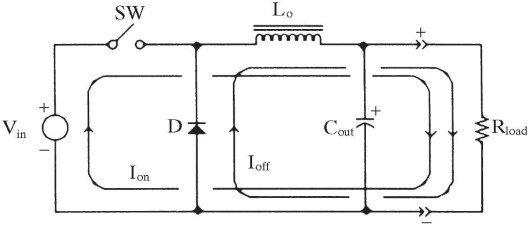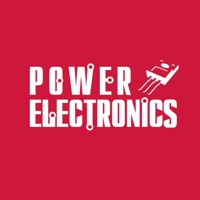What is holding current in SCR?
It is the minimum current required to hold the SCR in forward conduction state.
When the forward current becomes less than holding current, SCR turns from forward conduction state to forward blocking state.
What is latching current in SCR?
It is the minimum current required to latch(turn on) the SCR from forward blocking state to forward conduction state.
What are the different turn on methods of SCR?
Forward voltage triggering
Gate Triggering
dv/dt triggering
Temperature triggering
Light triggering
What is snubber circuit?
The snubber circuit is used for the dv/dt protection of the SCR. It is a series combination of a resistor and a capacitor in parallel with the SCR.
What is hard switching of the thyristor?
When gate current is several times higher than the required gate current, the SCR is said to be hard fired. It reduces the turn ON time and enhances the di/dt capability.
What is firing angle?
The angle between the zero crossing of the input voltage and the instant the SCR is fired is called as delay angle or firing angle.
What is meant by SOA?
SOA – Safe Operating Area determines the voltage and current boundary within which the Power Device can be operated without destructive failure.
What are the main components used for isolating the Power Circuits, Power Semiconductor from the low-power circuit?
Opto-Couplers, Transformers
Name some of the current controlled (current driven) devices
SCR, GTO, GTR
Name some of the voltage driven ( Voltage controlled) devices
IGBT, MCT, IGCT, SIT
What is duty cycle?
It is the ratio of the ON time of the chopper to total time period of the chopper.
D = Ton / [Ton + Toff]
Can fuses with an AC voltage rating be used in a DC applications?
Fuses must be rated for the voltage AC or DC in which they will be used.
Generally, fuses have a DC voltage rating that is half of the maximum AC voltage rating.
What are the characteristics of ideal Opamp?
Infinite open loop voltage gain
Infinite input impedance
Zero output impedance
Infinite Bandwidth
Zero offset voltage
For High voltage applications will you prefer MOSFET or IGBT?
- For High voltage applications we have to use IGBT.
- Because MOSFETs are low voltage devices. ie, Their voltage rating is lesser than IGBT.
- General rule is MOSFETs are suitable for applications which has breakdown voltage less than 250V.
- The IGBTs are suitable for applications which has breakdown voltage upto 1000V.
For High frequency applications will you prefer MOSFET or IGBT? Why?
- For High frequency applications, MOSFET is the right choice of the device.
- Because MOSFET has low switching losses compare to that of IGBT.
- General rule of thumb is for low-frequency applications having frequency range upto 20kHz, we have to use IGBT.
- For high frequency applications having frequency range of more than 200kHz, we have to use MOSFET.

So you should be familiar with other basic topologies like Flyback, Boost , Buck-boost….
Which is the good choice among the 2 options mentioned below to get the 12V as an output? why?
Option I: Input voltage = 48V,
Option II: Input voltage = 24V
Answer:
We know that
Duty cycle D = Vout / VInput
For case I
D = 12/48 = 0.25
For case II
D = 12/24 = 0.5
So for case II, the duty cycle is more than case I.
It means device is turned ON more time in the second case. while designing SMPS we have to consider the principle mentioned in Q-3.
What is effect of having more duty cycle and less duty cycle? ( continuation of above question)
If the duty cycle D is greater than 0.5, the core would not be completely demagnetized at the end of the off-period, and a DC magnetization of the core would build up, resulting in core saturation.
Relate this answer the previous question….
To design the buck converter, what are basic & essential information (parameters) we need to get from the Customer?
We need the following inputs from the customer,
Output Voltage VOUT
Input Voltage VIN
Output Current (load current) IOUT
Maximum Ripple voltage allowed at the output side
Efficiency of the converter
How to select the inductor for the buck converter?
Once the topology is finalized in the process of power supply design, the next step is selecting the Inductor.
We know the following basic equation
Voltage across Inductor VL = L di/dt
Rewriting the above equation as follows
L = VL.dt/di
VL = Maximum voltage appears across the Inductor
dt= The time during which the maximum voltage appears across the inductor
di = Ripple current
VL The maximum voltage appears across the inductor when the power switch is turned on. During that time the voltage will be
VL = VOUT – VIN
dt = The time during which the maximum voltage appears across the inductor
= D/FS
= Duty cycle/Switching frequency
di = Ripple current
= Generally it is assumed in between 10% to 30% of the load current
By knowing all these values we can get the required inductor value for the buck converter.
What are the various parameters we have to consider, while selecting IGBT?
In IGBT datasheet, we have to focus on following parameters
Collector to emitter voltage VCES
Collector Current IC
Collector Dissipation PC
Junction Temperature Tj
For Selecting MOSFET, what are the major parameters we have to consider in the datasheet?
In MOSFET datasheet, we have to focus on following parameters:
Drain to Source Voltage VDSS
On state Drain to Source Resistance RDS(ON)
Reverse Recovery Current IRR
Reverse Recovery Charge QRR
Gate Charge QG
Body Diode Characteristics
ID at ambient temperature
Channel power dissipation
Channel temperature
What are the advantages of free wheeling diode in rectifier circuit?
The input power factor is improved. It prevents the output voltage from becoming negative. Load current waveform is improved.
What is meant by commutation?
The process of changing the direction of current flow in a particular path of the circuit. It is used to turn off the SCR.
What are the types of commutation?
Natural commutation
Forced commutation
What is natural commutation?
The process of the current flowing through the thyristor goes through a natural zero and enable the thyristor to turn off is called as natural commutation.
What is forced commutation?
The process of the current flowing through the thyristor is forced to become zero by external circuitry is called as forced commutation.
What are the types of commutation with respect to commutation process?
Voltage commutated chopper
Current commutated chopper
Load commutated chopper
What is meant by cyclo-converter?
It is also known as frequency changer. It converts input power at one frequency to output power at another frequency with one stage conversion.
What are the types of cyclo-converters?
Step up cyclo-converter
Step down cyclo-converter.
What is step down cyclo-converter?
It is the converter whose output frequency is less than the input frequency.
What is step up cyclo-converter ?
It is the converter whose output frequency is more than the input frequency.
What does the Voltmeter in AC mode show? Is it RMS value or peak value?
Multimeter in AC mode shows RMS value of the voltage or current. Also when it is DC mode it will show the RMS value only.
What is the necessity to use the special machines?
General purpose motors (Induction motors, synchronous motors) are neither precision speed nor precision position motors. For many automated systems require high precise speed and high precise positioning motors. In such cases special purpose motors like stepper motors, PMDC motors etc. are used.
What are the control strategies of chopper?
The control strategies of chopper are
1. Pulse width modulation PWM (Variable TON, Constant frequency)
2. Frequency modulation (Constant TON or TOFF, Variable frequency)
3. Current Limit Control (CLC)
What is delay angle or what is firing angle of phase controlled rectifier?
The delay angle is the angle at which thyristors are triggered after zero crossing. After zero crossing of supply voltage, one pair of thyristors is
forward biased. After delay angle(α) these SCRs are triggered.
What is Universal Motor?
It is defined as a motor which can be operated either on DC or single-phase AC supply at approximately the same speed and output.
The universal motor is built exactly like a series DC motor. But a series DC motor cannot be run as a universal motor, even though both motors look the same internally and externally.
We cannot use these motors in the industrial applications due to the low efficiency (25% -35%). It has high starting torque and a variable speed characteristic. It runs at dangerously high-speed on no load.
Give some examples of power electronics applications in the day-to-day life?
We can list a huge number of power electronics applications. Few of the applications which we can see in our daily life are
UPS – Uninterruptible Power Supply
SMPS – Switch Mode Power Supply
Speed Control of Motors
ICU
What is meant by PMDC?
PMDC stands for Permanent Magnet DC Motor
A Permanent Magnet DC Motor is similar to an ordinary dc shunt motor except that its field is provided by permanent magnets instead of salient-pole wound field structure.
There are three types of permanent magnets used for such motors namely;
(i) Alnico Magnets
(ii) Ceramic magnets
(iii) Rare-earth magnets
The major advantages are low noise, small size, high-efficiency, low manufacturing cost.
Also Read: Power Systems Interview Questions










